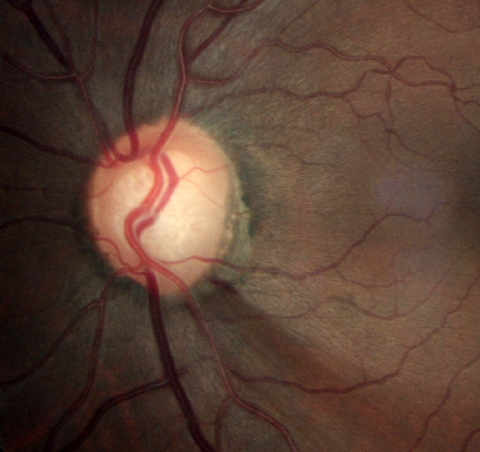 |
| Incidence of disc hemorrhage, as well as IOP levels in affected patients, appear to be affected by temperature. Photo: Joseph Sowka. OD. Click image to enlarge. |
To everything there is a season, and that apparently includes optic disc hemorrhages. Screening for this prominent risk factor in glaucoma is common practice, and if a patient does indeed have a disc hemorrhage, frequent observation helps identify signs of disease progression. Understanding how seasonal variability may impact hemorrhage presentation and corresponding intraocular pressure (IOP) levels will improve diagnostic accuracy. A recent study determined that optic disc hemorrhage varied based on the season in relation to the change in monthly average temperatures.
The study evaluated red-free retinal nerve fiber layer photography of patients who had visited the Glaucoma Clinic of Seoul National University Hospital in 2019 or 2020. They gathered data on the monthly incidence rate of disc hemorrhage, patients’ IOP levels and seasonal temperature information, which split each 12-month period into three categories based on the monthly averaged temperature (T): T≥20℃, 10℃≤T<20℃, and T<10℃.
Fundus images of 13,707 eyes were obtained, 454 (3.4%) of which were confirmed to have disc hemorrhage by the two study observers. They determined that as the temperature rose by 1°C, the disc hemorrhage ratio was reduced to 0.1. When they compared the T<10℃ group to the T≥20℃ group, the disc hemorrhage incidence ratio was 1.53.
The researchers also found that IOP levels in hemorrhage patients were higher in winter than in summer. Relative to January, the disc hemorrhage incidence ratio for September, August, July and May was 0.42, 0.54, 0.55 and 0.54, respectively.
“Many studies have reported that increased IOP in the winter is associated with deformation of the lamina cribrosa,” the study authors wrote. “Therefore, it can be considered that incidence of disc hemorrhage increases as IOP increases in the winter season.”
The researchers also suggested that this theory may be explained by vascular dysregulation and hemodynamic factors. “It has been reported that a decrease in ocular blood flow in response to a cold stimulus in vascular dysregulation is an indication of a link between endothelial nervous system and autonomic nervous system dysfunction,” they noted.
This study concluded that the association between monthly temperature fluctuation and disc hemorrhage incidence may be a topic of interest in further research.
Jang M, Kim YK, Jeoung JW, et al. Analysis of variation in incidence of optic disc hemorrhage according to seasonal and temperature changes. Am J Ophthalmol. February 8, 2022. [Epub ahead of print]. |


